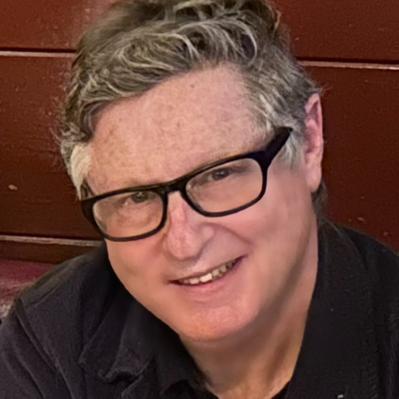At the end of each year, I find that there are many great art exhibits that I saw but did not get around to writing about.
This past September, when visiting San Francisco on other projects, I had the chance to see three notable art exhibitions.
The first two were at the San Francisco Museum of Art (SFMoMA). The most striking was an installation of sculptural automatons by Kara Walker, called Fortuna and the Immortality Garden Machine.
Kara Walker SFMOMA Installation View
Photograph © 2024 Fredrik Nilsen, All Rights ReservedKara Walker is known for reclaiming decoupage to explode racist Civil War-era imagery of Black life during slavery and speak truth to power about the murderous and sexual predation that occurred, all couched in seemingly happy imagery of plantation slave life and minstrel shows.
Kara Walker SFMOMA Installation View
Photograph © 2024 Fredrik Nilsen, All Rights ReservedIn this installation, the full title of which is Fortuna and the Immortality Garden (Machine) / A Respite for the Weary Time-Traveler. / Featuring a Rite of Ancient Intelligence Carried out by The Gardeners / Toward the Continued Improvement of the Human Specious / by Kara E-Walker, the artist has created a series of figures standing in a field of black lava rock. These are Afro-futurist figures, that at the same time harken back to the Victorian-era dress of The Civil War-era South, while also recalling Octavia Butler’s science fiction, such as Parable of the Sower. Similarly, these figures move like ancient fun-fair automatons but at the same time are unlike anything you’ve ever seen, at times grotesque, and at other moments, charming and captivating.
Kara Walker SFMOMA Installation View
Photograph © 2024 Fredrik Nilsen, All Rights ReservedA commentary on past trauma, our technological present, and offering possible hope for the future, the figure of Fortuna stands separate from the others, dispensing printed fortune-cooking like koans to visitors, which are printed from her mouth and then fall like ribbons to the ground. It is strange, unsettling and worth seeing.
Looking at the work, you have to respect Walker for just going there. As an artist, she is fearless. Yet, to me, this feels more like an experiment, rather than a permanent direction for her work. Time will tell, and no question, this will remain an important touchstone in her evolving career.
Ron Veasey., Untitled n.d., Purchase, by exchange, through a gift of Mr. and Mrs. Louis Honig, Creative Growth
44.25x30.25Another exhibition at SFMOMA which I saw in its last weeks, Creative Growth: The House That Art Built, was about the Bay Area based nonprofit that for the last 50 years has encouraged people with disabilities to make Art.
Founded by artist Florence Katz and her husband, psychologist Elias Katz, in the garage of their Berkeley home in 1974, their founding documents state: "Our philosophy is that each person has the right to the richest and fullest development of which they are capable.”
Many of the individuals in its program came to artmaking later in life, and have become recognized artists. So much so that SFMoMA has acquired a trove by Creative Growth artists, including Joseph Alef, Camille Holvoet, Susan Janow, Dwight Mackintosh, John Martin, Dan Miller, Donald Mitchell, Judith Scott, William Scott, Ron Veasey, and Alice Wong.
Today, more than 140 artists work at the organization, using every medium, from painting and drawing to ceramics, wood, fiber, digital media, and printmaking. Not only is the work interesting but it imparts joy in the expression of creativity fostered by the organization.
Alex Stern, Star Colored David 2023
Alex Stern, Courtesy of the CJMLast but certainly not least I went to the Contemporary Jewish Museum (The CJM) to see their first open call exhibition 1 of Jewish identifying artists in California. This exhibition garnered controversy at every step. Some artists didn’t want to identify as Jewish (i.e. We’re just artists), others wanted their work to express their anti-Israel and/or support of Palestinian nationalist resistant movements. In the end, the museum left a wall of blank space for those artists who chose not to participate or whose works were not deemed appropriate for this exhibition.
Tiffany Shlain, My Center willHold, 2023
Courtesy of the artist and The CJMThe political controversy aside, the works on exhibit represented a wide range These were works by artists who identify as Jewish. Some had visible Jewish overtones, some none at all. The works were in a variety of mediums.
The artists whose work were exhibited in the California Jewish Open were Richard H. Alpert, Cheselyn Amato, Alexis Arnold, Marianna Baker, Robin L. Bernstein, Emily Bogin, Leon Borensztein, Natalya Burd, Kim Kyne Cohen, Beth Fein, Rebecca Fox, Deborah Benioff Friedman, Elina Frumerman, J. Ruth Gendler, Rebekah Goldstein, Amadi Greenstein, Ash Hay, Christine Huhn, Ken Kalman, Marty Katzoff, Mirka Knaster, Lisa Kokin, Anna Landa, Liz Lauter, Terri Loewenthal, Bernie Lubell, Stela Mandel, Bonny Nahmias, Irene Nelson, Vanessa Niederstrasser, Meirav Ong, Rebecca Ora (rora), Laura Puras, Forest Reid, Georgina Reskala, Kim Schoenstadt, Ronit Shalem, Laurie Shapiro, Tiffany Shlain, Deborah Stein, Alex Stern, Vanessa Thill, Adam Thorman, Amy Trachtenberg, Anne Wolf, Steven Wolkoff, and Holly Wong.
The CJM recently announced that that they were closing temporarily, perhaps for up to a year as they reconsider their financial path to sustainability. It would be unfortunate to lose this great institution that has exhibited so many creative, thoughtful, and thought-provoking work that explore Jewish creativity.
These shows stayed with me, and were part of what made the West Coast such a dynamic center for Art in 2024.

